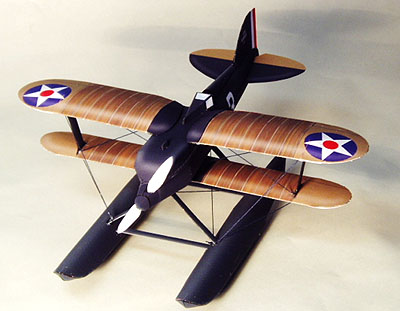According to William Bevan (
New Aircraft Engines, Purdue Engineering Review, Vol. 18-22), the Curtiss V-1400 was developed to meet the requirements for an engine of about 500 horsepower with minimum weight and great reliability The engine had a bore of 4.875 inches; stroke 6.15 inches; and compression ratio 5.5 to 1. It was rated at 510 horsepower at 2,100 rpm. The weight was 660 pounds or 1.3 pounds per horsepower. It was engine was 75 pounds lighter than its nearest competitor in the 500 horsepower class. Both United States Army and Navy racing entered in the Pulitzer and Schneider cup races of 1925 were powered with engine and new world's speed records were established in both races Lieutenant Bettis of the Army Air Service.
According to Hugo T. Byttebier, (
The Curtiss D-12 Aero Engine, Smithsonian Annals of Flight, Number 7): “One result of the crystallization of the D-12 design at Curtiss was that demands for more power, which inevitably were to be made, could be met only by enlarging the size of the cylinders in new models, without changing the basic design. We have already encountered the D-12A of 1923, which had had its bore increased by one-eighth inch and was able to develop about 500 bhp for racing. It was not rated for service, however, and only a few units were built. The design of a bigger engine, the V-1400 was started in 1924. It was introduced in the 1925 Pulitzer race, which it had no difficulty in winning, and it did not encounter any worthwhile opposition at the Schneider Trophy contest.”
According to Byttebier, (
The Curtiss D-12 Aero Engine, Smithsonian Annals of Flight, Number 7): “The V-1400 had its bore enlarged by another quarter inch (to 4% in.) and its stroke also increased by a quarter inch (to 6V4 in.). This engine gave 620 bhp on the test bench, and it was even lighter than the D-12. The only departure from the basic D-12 design was the important one of using open-ended cylinder liners. The V-1400 passed a 50-hour test at 500 bhp in 1924 but it was not put into production. Twelve units were built, five of which were destined for the P-2 fighter.”





